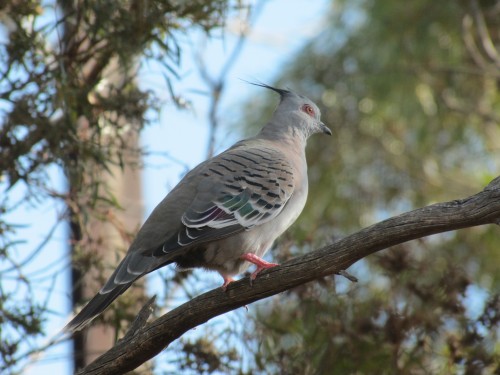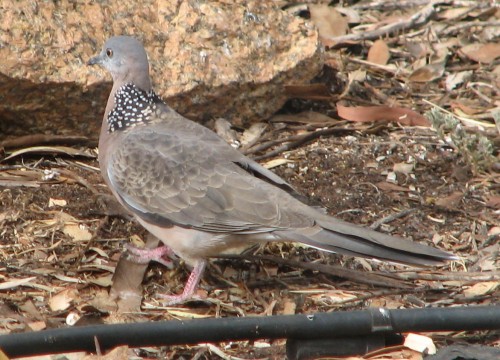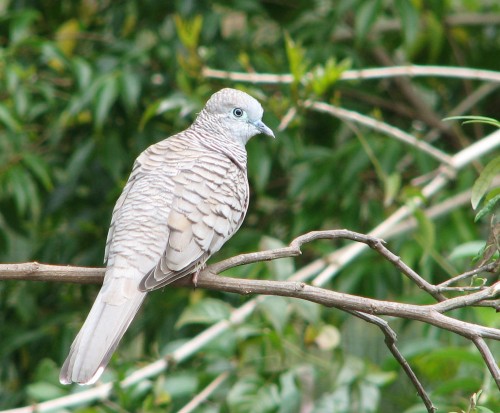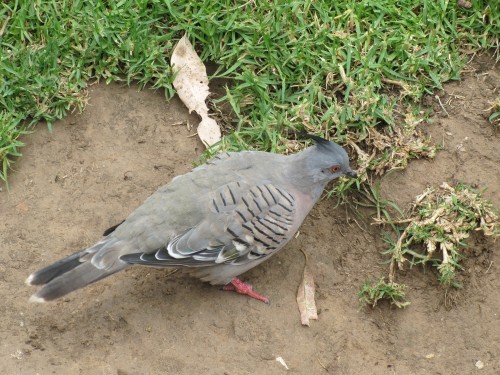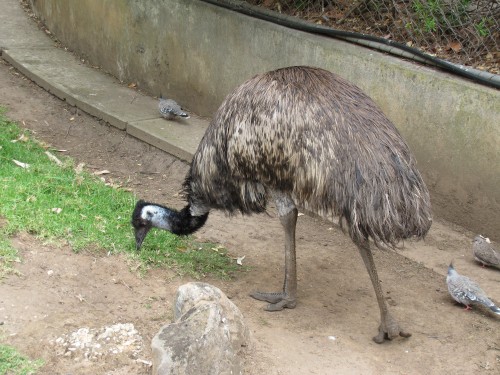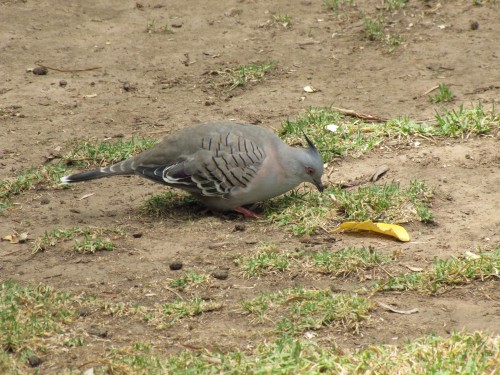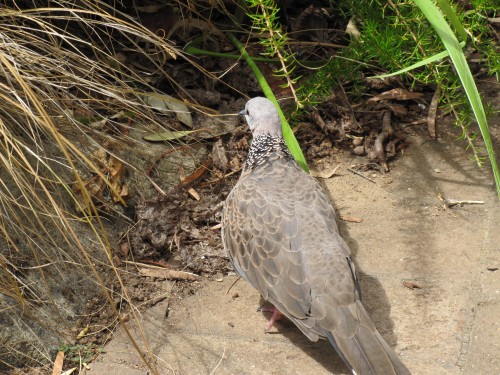Pigeons and doves
I went for a walk of The Estate this afternoon.
When I say “The Estate”, please understand that we only own a 5 acre (2 hectare) block.
As I passed along the neighbour’s fence, I glanced over into the area in front of their house. On the grass I saw six birds feeding on the grass: 2 Crested pigeons, 2 Spotted Turtledoves and 2 Peaceful doves, all within about 2 or 3 metres of each other.
This is the first time I’ve seen all 3 species feeding in such close proximity to each other.
Note: I didn’t have my camera with me, so the photos shown today were taken on another occasion.
Crested Pigeons, Adelaide Zoo
Adelaide Zoo has an excellent collection of birds, both Australian and non-Australian birds. In addition to those kept in aviaries, there is a thriving population of local birds which come in to feed in the animal enclosures.
Crested Pigeons are in evidence everywhere and on this occasion I managed a few good shots of some. This is generally very easy for they move quite unafraid amongst the zoo visitors. Those shown on today’s photos were feeding in the Emu enclosure, along with a few Spotted Turtledoves for good measure.
Spotted Turtledove, Adelaide Zoo
The Spotted Turtledove is an introduced bird species in Australia. It has become common in many parts of the country, especially in our cities and larger towns. In some parts it is almost in pest numbers, taking valuable food and nesting materials from native species. Some people find its incessant cooing call to be very annoying, although I sometimes find it to be somewhat soothing – until it goes on for hours!
The bird shown in today’s photo was wandering around in the grounds of the Adelaide Zoo here in South Australia. It wasn’t part of the zoo’s excellent bird collection but was rather taking advantage of food left for animals on display – and food items dropped by careless human visitors.
Spotted Turtledove drops by
We have recorded over 100 species in our garden over the last 28 years. Of these, more than 40 could be regarded as resident breeding species.
One of the resident breeding birds is the introduced Spotted Turtledove. In some parts of urban Australia, this species is so common it is regarded as a pest species. In our garden, however, we only have a handful – perhaps 3 or 4 – at any one time.
They’ve been rather quiet over the last month or so; their incessant cooing can drive one to distraction if you are trying to concentrate, or have a headache. I haven’t searched the garden but they may well have been keeping quiet while they nested.
While having breakfast this morning this individual came to visit the bird bath just outside the sun room. This is a flighty, easily scared species, so it was good to get a close-up photo.
Some of the photos shown here on Trevor’s Birding can now be purchased on tee shirts, coffee mugs, stationary and a large range of other items. Go to Trevor’s Photos site here.
Never assume anything about birds
Of the many things I’ve learned about birds over the years, one principle stands out: never assume anything.
I was out in the garden searching out several birds making a noise near the house. I didn’t get much of a look at them but by their call and the quick look I had of one of them I think they were Yellow (Little) Thornbills.
As they flew off my attention was drawn to a solitary bird perched high in a dead branch of a nearby tree. “Spotted Turtledove” I immediately thought, as they are a common breeding species in our garden. I lifted my binoculars and was delighted to see that the bird in question was actually a Common Bronzewing Pigeon.
This was a good sighting, for although they are a common species in our district, they tend to prefer less populated, thicker scrubby areas. On checking my bird database I found that this was only the 5th record of this species on our block of land. My records go back 28 years, so I was quite pleased I saw this individual.
And to think I’d almost not given it another look.
